Tag: training
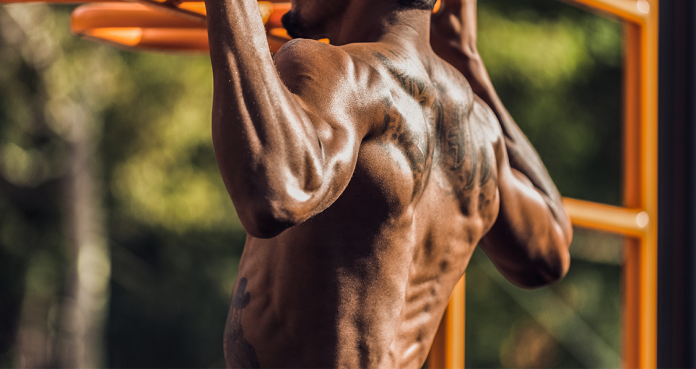
Build A Thick and Wide Cobra Back With This Workout
Build A Cobra Back With This Back Workout
Hitting the lat spread pose should look like you’re drawing curtains on the people standing behind you. Bodybuilding is a game of illusions, and a V-Taper can make you stand out by making your upper body look bigger and meaner.
An effective back workout should have a combination of isolation, compound, pulling, and pushing movements to target your lats optimally. We’ve designed a workout for you which will take your back gains to the next level.
Pull-Ups – 50 Reps
We took this tip from the Governator himself. Arnold used to perform 50 reps of pull-ups at the beginning of each back workout. Pull-ups are a great way of warming up your back and building the width in your lats.
You must hit your back from all the angles. Make sure you’re not just going through the motions. Squeeze and contract your muscles with every rep to make the most of the exercises.
T-Bar Rows – 3 Sets 12-15 Reps
The pulling movements help in building the width in your lats and the rowing lifts develop the thickness in the back. If you don’t have a T-Bar machine at your gym, you can use a barbell as the T-Bar by placing one end of the bar in a corner so it doesn’t move.
Most people make the mistake of standing upright or bending over too much while performing the T-Bar rows. Your torso should be forming a 45-degree angle with the floor throughout the exercise.
Superset
Wide-Grip Lat Pulldowns – 3 Sets 12-15 Reps
Straight Arm Cable Pulldowns – 3 Sets 12-15 Reps
While performing the wide-grip lat pulldowns, make sure you are not using momentum by swinging back and forth. Using the jerking movement takes off tension from your lats by recruiting your arms.
The straight arm cable pulldowns work the thickness of your back. Your elbows will be locked at an angle and your torso will be at a 45-degree angle with the floor. Keep your upper body stationary throughout the exercise.
Single-Arm Dumbbell Rows – 3 Sets 8-12 Reps
Dumbbell rows are a staple in the back workouts. Perform the dumbbell rows by placing one hand and knee on a flat bench while holding a dumbbell in the other hand, and the other foot on the floor.
While rowing the dumbbell, keep all the tension on your lats. If you feel stress building up in your biceps, it means you’re using momentum which is leading to the recruitment of the secondary muscles.
Superset
Barbell Pullovers – 3 Sets 12-15 Reps
Weighted Hyperextensions – 3 Sets 12-15 Reps
Barbell pullovers are one of the most underutilized back exercises. Perform the barbell pullovers by lying across a flat bench while holding a barbell above your chest. You need to keep your elbows locked so your arms are in a straight line. The barbell pullovers help in developing the V-taper. A broad back can make your shoulders look wider and the stomach thinner.
Developing the separation and conditioning in the lower back can be one of the trickiest things. You can perform the weighted hyperextensions by holding a barbell, weight plates or dumbbells in front of your chest.
Which is your favorite back exercise? Let us know in the comments below. Also, be sure to follow Generation Iron on Facebook, Twitter, and Instagram.
Header image courtesy of Envato Elements
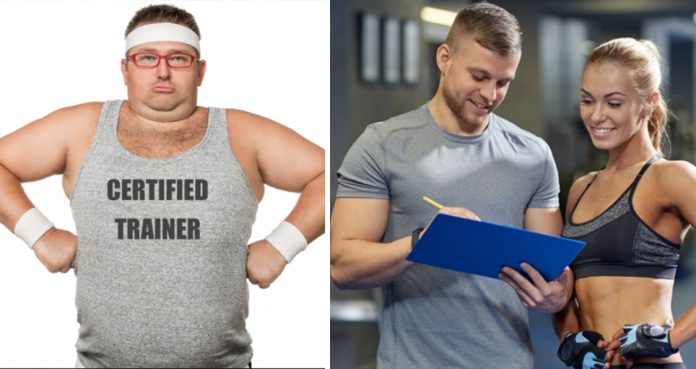
Personal Training Should Be A Strict No And This Is Why
These Are The Reasons Why You Should Never Sign Up For Personal Training
Personal training is one of the biggest profit making services for a gym and its trainers. This is the reason the staff at the gyms push people to sign up for personal training (PT) programs. The newbies are the most prone to the PT sales pitch.
If you’ve just got a gym membership, working out can look intimidating. The trainers at your gym know this and will try to push you into signing up for a PT. No matter how hard they try, you should stay away from it.
1. Not For The Long Run
Staying with a personal trainer forever can be hard even if you want to compete in pro bodybuilding shows. Most people tend to stop taking the personal training services once they get the knack of things in the gym.
While this might be the obvious next step for you, there are chances your personal trainer will not be happy with your decision. Don’t expect help or spot from the trainers at your gym once you’re off the personal training program.
2. Cross Selling
Once you sign up for PT, you’ve established you’re ready to spend handsomely on your health. Many gyms recommend and sell supplements to their customers and make a fat commission on every sale.
Cross selling doesn’t end at supplements. It can even extend to gym gear and any other thing related to fitness and working out. Don’t be surprised the next time your personal trainer finds something extraordinary and wants you to try it.
3. Over Dependence
Getting a personal trainer for yourself is like outsourcing the tension about your health. This can be a good and a bad thing. Over-dependence on your trainer for your training and nutrition plans can be harmful.
Your trainer will love to do all this work since it will keep you dependent on him. You should be actively involved in building your diet and training plans. Make sure you’re questioning and learning from your trainer with every single passing day.
4. No Custom Training Programs
Personal training isn’t as personal as you might think it is. Look at it from the business point of view, the more clients the trainer services, the more he earns. Training clients for the entire day can leave little to no time to work on individual client training programs.
The trainers end up building a generic training plan which all their trainees follow. In worse cases, people follow plans which are available on Bodybuilding.com for free. If you decide to opt for personal training, see to it your instructor builds a custom plan for you.
5. Getting A Wrong Match
No two people are the same. You can’t go with any fitness trainer. You need someone who matches your personality and style and understands where you lack. Your fitness instructor will be with you for the entire time you’re in the gym, choose someone you can jell well with.
Hiring a wrong match can act as a demotivation. You might start skipping your workouts because of your trainer. The best way to avoid this is to ask the trainer for a trial and only finalizing if he is a good fit for you.
Have you ever opted for personal training? Let us know in the comments below. Also, be sure to follow Generation Iron on Facebook and Twitter.
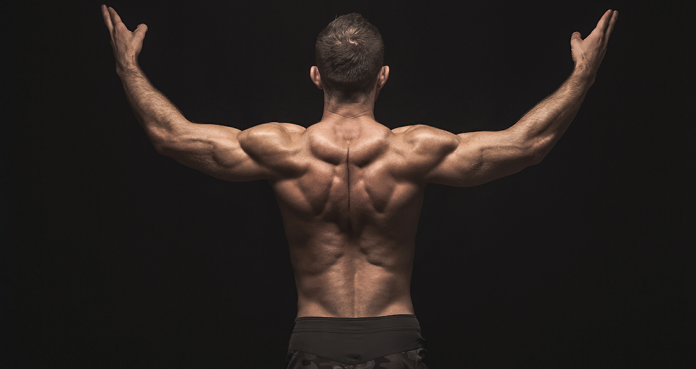
Achieve Mind Boggling Shoulder Gains With These 4 Exercises
A Complete Shoulder Workout
Broad shoulders are a sign of strength and power. Imagine what would Superman look like with tiny shoulders. A study from the University of Albany found that a woman’s sexual satisfaction is strongly linked to her partner’s attractiveness and shoulder breadth.
Going by this research, who wouldn’t want to have a nice set of shoulders. This is easier said than done. Shoulders are one of the hardest muscle groups to develop. Building round shoulder caps requires a combination of compound and isolation exercises.
Shoulders consist of three heads; medial (middle), anterior (front) and posterior (rear). Most people have lagging shoulders because they fail to train all the three heads equally. The rear deltoids are usually the most stubborn among the three.
We have designed this workout keeping in mind an overall development of your shoulders. If you’re stuck on a plateau, you should also experiment with advanced training techniques like supersets, drop sets, rest-pause sets, etc.
1. Military Presses – 3 Exercises 12 Reps
Military presses are a compound exercise which works the medial and the anterior shoulder heads. You should start your shoulder workout with the military presses as they are one of the most taxing exercises.
Since this is an overhead movement, you need to be extra careful while performing it. Ask someone for a spot if you’re going for a PR. You should also be using lifting equipment like a weightlifting belt and wrist wraps for support.
2. Dumbbell Front Raises – 3 Exercises 12 Reps
Dumbbell front raises work the anterior (front) deltoids. Most people make the mistake of going too high while performing this exercise. Raise the dumbbells to your eye level without using any momentum.
Negatives are an important part of the dumbbell front raises. Don’t drop the weights like a bomb, keep the negatives slow and controlled. If you want a better pump, perform unilateral sets. Unilateral sets are when you perform all the reps on one side before moving on to the other.
3. Pec Deck Rear Flyes – 3 Exercises 15 Reps
Most people lack in the rear delt department. They make it even worse by not training their rear deltoids often enough. Since your rear delts are at your back, it is hard to establish a mind-muscle connection with them as you can’t see them in the mirror.
Pec deck rear flyes are an isolation exercise. Using cables help in maintaining constant tension on your rear delts throughout the movement. Pause for a second at the top of the movement and squeeze your rear delts.
4. Cuban Presses – 3 Exercises 12 Reps
[embedded content]
Cuban Presses are an incredibly effective exercise which helps in building overall muscle mass. Hold dumbbells in both hands and place them in front of your quads. Perform an upright row and at the top of the upright row, switch to the shoulder press position.
Complete a shoulder press and return to the starting position by performing a negative on the upright row. Use moderate weights while performing this exercise as it is more brutal than it might look like.
5. BONUS: Barbell Shrugs – 3 Sets 15 Reps
Don’t leave out your traps while training your shoulders. The trapezius is one of the major muscles of the back and is responsible for moving, rotating, and stabilizing the scapula (shoulder blade) and extending the head at the neck.
While performing the barbell shrubs, most people put more weights on the bar than they can handle. Bring your shoulder to your ears and hold them there for a second. You can also perform this exercise using dumbbells.
What day of the week do you train your shoulders? Let us know in the comments below. Also, be sure to follow Generation Iron on Facebook and Twitter.
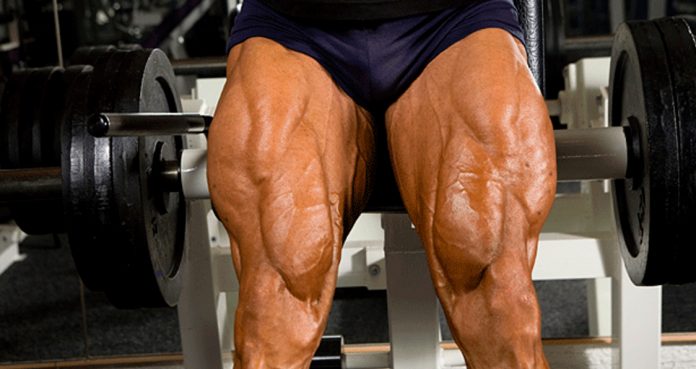
5 Exercises for Shredded Legs
Get Shredded Legs with these 5 Exercises
Shredded legs are what separate the men from the boys. You need to have strong and muscular wheels as your legs are the foundation of your body. While legs are one of the most important muscles to train, many people around the world skip training them.
You need a combination of compound and isolation exercises in your workouts to take your wheels to the next level. Time under tension, volume and intensity play a major role in developing your legs.
Hack Squats – 3 Sets 15 Reps
Hack squats are one of the most underutilized exercises when it comes to leg training. The hack squat machine helps you to tweak your movement to target your quads from different angles.
Arnold in his book ‘Encyclopedia of Bodybuilding’ said that you are supposed to maintain a full range of motion while performing the hack squats. Place your feet under your body and push your knees forward on the negative motion. Pause at the bottom of the movement and explode back to the starting position.
Leg Extensions – 3 Sets 15, 12, 10 Reps
Most people perform the leg extensions incorrectly. They load the extension machine with more weights than they can handle and use momentum and a jerking movement to lift the weights. The most effective way of doing the leg extensions is to pause for a couple of seconds at the top of the movement.
The positive movement should take one second, hold the weights on the contraction for two seconds, take four seconds on the negative movement and take no rest by racking the weights at the starting point.
Good Mornings – 4 Sets 8 Reps
Since your Hamstrings are at the back of your legs, it is harder to train and develop them as compared to your quads. It also becomes harder to establish a mind-muscle connection with your hams since you can’t see them in the mirror.
Good mornings are a hard exercise to execute and you need to keep the movement slow and controlled to get the best results. If you perform the good morning in a squat rack, set-up safety bars at your belly button level and bend until the barbell touches the safety bars.
Nordic Curls – 3 Sets 15 Reps
[embedded content]
Chances are you might not have seen anybody perform the Nordic curls exercise in your gym. Nordic curls can set your hamstrings on fire and you will need a spotter if you have weak hams.
The lat pulldown machine is the best place to perform this exercise. Put your ankles between the knee pads and the seat and place your knees on the seats. Bend your back so it is parallel to the floor. This will be your starting position. Lower yourself using your hamstrings without moving your back, so your face is 8-10 inches away from the floor.
Cannonball Squats – 3 Sets 15, 12, 10 Reps
Perform the squats at the end of your workouts when your legs are completely exhausted. This way you won’t have to lift super heavy weights and your legs will be warmed up so you will have a better range of motion.
While performing the cannonball squats, you need to stand with the balls of your feet placed together and your toes facing outwards. The cannonball squats is a compound exercise which helps in developing the inner sweep of your quads.
Which is your favorite leg exercise? Let us know in the comments below. Also, be sure to follow Generation Iron on Facebook and Twitter.

The Arnold-Approved Training Program You Need to Try This Week
Try this Arnold-approved workout
If you’ve been around the fitness scene for some time, chances are, you would have come around Arnold’s Encyclopedia of Bodybuilding. In his book, The Governator, among many things, lists his experiences and results using various training programs.
One of the programs Arnold recommends in his book is the antagonistic superset training. Arnie considered them to be better than the usual supersets where you switch from one exercise to the other without any rest in between sets.
Antagonistic Training
In the antagonistic training, you train opposing body parts in the same workout. For example, Schwarzenegger liked to train his chest and back, biceps and triceps, quads and hams in the same workout.
Although there were no studies or research to prove it, Arnold claimed the antagonistic supersets help him gain muscle mass and improved his strength. Researchers have since backed this technique with data and have given Arnold’s claims a clean chit.
Things to Know About Antagonistic Training
You can use the antagonistic training principle of training opposing muscle groups as a superset or take a 2-3 minute rest before alternating the exercise.
Antagonistic training can help you in building pressing strength by alternating the exercise with pulling movements.
It helps in maintaining muscle balance as you’ll be doing the same amount of work on the opposing muscles.
Alternating sets with a 2-3 minute rest in between sets can increase muscular strength as compared to super-setting which annihilate the muscles.
While following the antagonistic training plan, you need to train your opposing muscles in the same plane to get the best results. For eg. – follow bench press with the bent over barbell row.
Develop Symmetry with Antagonistic Training
The antagonistic training is better at developing symmetry and eliminating muscle imbalances than most other training methods. If you’re already suffering from a muscle imbalance, train the lagging muscle before the stronger muscle in the alternate sets.
Antagonistic training ensures you’ll be doing enough work on both sides of the bone to build and maintain muscle symmetry. Alternating between pulling and pushing movements will keep you from overdeveloping some muscle groups which can cause a poor posture.
You could also perform supersets as opposed to the alternate sets in the antagonistic training program but be ready for a hard and grueling workout. Make sure you’re following the same intensity in the pulling and the pushing movements.
Use the Same Angles
A major aspect of antagonistic training is to use the same angles while performing the antagonistic exercises. If you’re performing dumbbell chest presses on an incline bench, turn around and perform dumbbell rows as the alternate set for your back.
In the same fashion, follow up the standing military presses with chin-ups. Using the same angles will ensure the muscles in direct opposition to the prime movers are trained more effectively.
The Arnold-Approved Antagonistic Training Program
Day 1 – Chest / Back
Set 1
Barbell Bench Press – 3 Sets 15-12-10
Bent-Over Barbell Rows – 3 Sets 15-12-10
Set 2
Incline Dumbbell Flyes – 3 Sets 15-12-10
Chest Supported Dumbbell Rows – 3 Sets 15-12-10
Set 3
Chest Cable Flyes – 5 Sets 15
Rear Delt Cable Flyes – 5 Sets 15
Day 2 – Biceps / Triceps
Set 1
Cable Bicep Curls – 5 Sets 15-12-10-8
Cable Tricep Presses – 5 Sets 15-12-10-8
Set 2
Incline Bench Spider Curls – 3 Sets 15-12-10
Incline Bench Skullcrushers – 3 Sets 15-12-10
Set 3
Bent Over Concentration Curls – 3 Sets 15-12-10
Leaning Dumbbell Tricep Kickbacks – 3 Sets 15-12-10
Day 3 – Shoulders / Back
Set 1
Barbell Military Presses – 3 Sets 15-12-10
Weighted Chin-ups – 3 Sets 15-12-10
Set 2
Plate Front Raises – 3 Sets 15-12-10
Straight-Arm Lat Pulldowns – 3 Sets 15-12-10
Set 3
Arnold Presses – 3 Sets 15-12-10
Upright Rows – 3 Sets 15-12-10
Day 4 – Quads / Hams
Set 1
Leg Extensions – 5 Sets 15-12-10-8
Seated Leg Curls – 5 Sets 15-12-10-8
Set 2
Leg Press (Feet Low on Platform) – 3 Sets 15-12-10
Leg Press (Feet High on Platform) – 3 Sets 15-12-10
Set 3
Squats – 3 Sets 15-12-10
Set 4
Stiff-Legged Deadlifts – 3 Sets 15-12-10
Have you ever tried the antagonistic training principle? Let us know in the comments below. Also, be sure to follow Generation Iron on Facebook and Twitter.
*Header image courtesy of Jamie Wyeth under the CC BY-NC-SA 2.0 license.
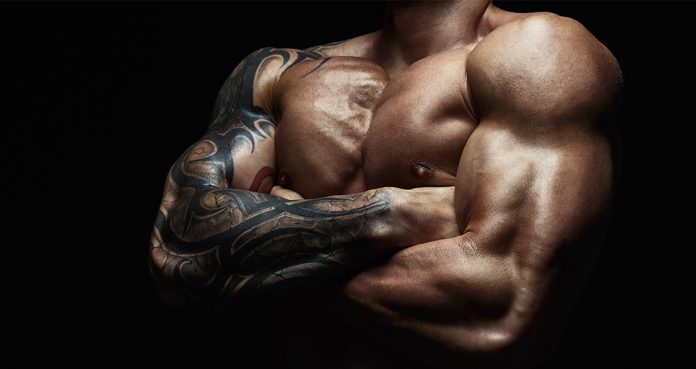
5 Ways To Bring Up A Lagging Body Part
Follow These 5 Steps To Bring Up Your Lagging Muscle Group
You’re having the perfect workout, you’re all pumped up and your biceps have turned into mountains, but then you look at your toothpick legs and its all over. Most people have a lagging body part which can create a hole in their self-confidence.
There could be a couple of reasons behind the lagging body part. It could either be your genetics or you’re not training the muscle group correctly. A lagging body part needs to be treated differently as compared to the other muscles.
1. Start Your Workouts With The Weaker Muscle Group
Humans have unique genetics and they determine the muscle composition of an individual. Although the most common weak muscle groups are forearms, calves, biceps, and triceps, it may vary for every person.
If you train your lagging muscle group with a stronger muscle group, you should train the weaker muscle at the beginning of your workout. If you have weak calves and stronger upper legs, you should train your calves before you train your quads and hams.
2. Use Advanced Training Techniques
A big reason why you might not be seeing results in the gym could be because your body has got used to your training. You should constantly change your training programs and use advanced training techniques to break the plateau.
Advanced training techniques like supersets, drop sets, negatives, intraset stretching, etc. are a great way to pump blood into your weaker muscles and shock them. Try switching these advanced training techniques with every workout for optimal results.
3. Train The Lagging Muscle Group Twice A Week
If you’re not seeing results you should start training your weak muscles twice a week. You don’t need to worry about overtraining your muscles if you give your body enough time to recover between the workouts.
Schedule your workouts so you have at least 48 hours before you hit the same muscle again. Keep your workouts short and explosive. You should be spending around 45-60 minutes inside the gym, not more than this.
4. Switch Volume and Intensity
Most people make the mistake of sticking to the same volume and intensity for all their workouts. While 3 sets of 12 reps might work for other muscle groups, they won’t budge the needle for your weaker muscles.
Volume refers to how many reps or sets are performed, and intensity indicates how much weight is lifted. Switch your volume and intensity at regular intervals to keep your muscles guessing. The combinations of high reps, low weight and low weight, high reps work the best for lagging muscles.
5. Establish a Mind-Muscle Connection
Bodybuilding isn’t about going through the motions. You need to focus on your muscles and contract them with every single rep. Arnold Schwarzenegger brought the mind-muscle connection to the limelight.
The Governator believes you need to become the muscle to see the best results. If you’re training your biceps, focus all your attention on the bicep and squeeze the living hell out of it at the top of the movement. Arnie is famous for thinking of his biceps as mountains.
Which is your weakest muscle group? Let us know in the comments below. Also, be sure to follow Generation Iron on Facebook and Twitter.
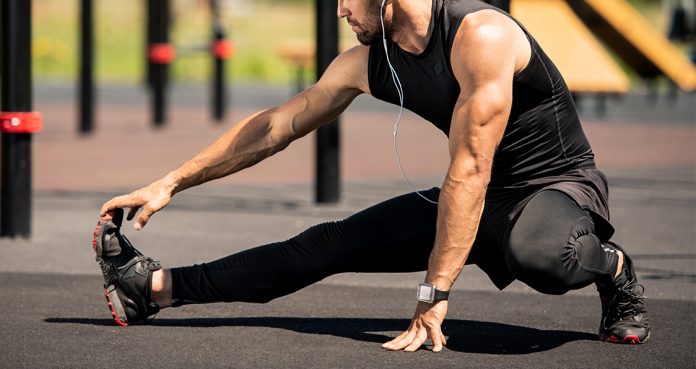
8 Mobility Exercises You Need To Do Before A Workout
Improve Your Mobility With These Movements
The worst thing you could do when you enter the gym is to go straight into your workout – and it’s exactly what most people do. Warming up by doing a few mobility exercises can greatly reduce the chances of an injury.
Working on your mobility can prime your joints and muscles for your workouts and facilitate your mind-muscle connection and pumps. In short, you should make performing the mobility movements an indispensable part of your warm-up ritual.
Shoulder Rotator Cuff Dumbbell Extensions
Your shoulder cuffs are a stiff muscle group and don’t have a lot of mobility. Not warming them up before a workout can lead to discomfort or an injury. Stand with a dumbbell in each hand and lock your elbows to your side. Bend your arms at the elbows so your lower arms are parallel to the floor.
While keeping your elbows pinned, slowly turn the dumbbells outwards as far as you can by moving at your forearms. Reverse the motion and turn the dumbbells inwards. Perform this exercise until you feel your shoulder joints have warmed up.
Foam Rolling
While there are hundreds of mobility and flexibility exercises out there, in this article, we’ll be focusing on the exercises you can do on your own. Foam rolling is a great way of loosening up your tense muscles.
It’s a form of self-myofascial massage which can be done for the majority of muscle groups. Foam rolling before a workout can help with mobility and can help speed up the recovery process when done after a workout.
Hip Openers
Hip openers are a great exercise for people who have problem squatting. Stand upright with your hands placed on your sides. Raise your right leg so your upper leg is parallel to the floor while keeping your left foot planted on the floor.
Make a circle with your right knee by bringing it across your body, and then out to the side. Repeat for the recommended reps and switch to the left leg.
Shoulder Pass Throughs
Stand with your feet placed shoulder-width apart. Hold a broomstick overhead with a grip that is as wide as possible. Bring the broomstick behind your back as far as you can without bending at your elbows. Return to the starting position and bring the stick forward so it rests against your quads. Repeat for the recommended reps.
Low Lunge With Push Back
Start with placing both your hands on the floor and in a low-lunge position with your left foot in front. Bring the left foot back to meet the right, send hips high, and press your chest back while coming into a bent-knee downward dog position.
Shift forward, stepping the right foot forward to the outside of the right hand, coming into a low lunge on the other side. Then step the right foot back and return to the downward dog position.
Seated Toe Touch
Seated toe touch is one of the most common stretching exercises. Sit on the floor with an upright torso. Lean forward to touch your toes without lifting your hams off the floor by bending at your knees.
Thoracic Bridge
Start in a kneeling push-up position. While keeping your left arm on the floor, rotate your body to the right side while keeping your heels planted on the floor and thrust up with your back and glutes to form a bridge while extending your right arm overhead and to your left side. Return to the starting position and repeat with your left arm.
Bicep Stretches
Stand beside a wall and place your right hand on the wall so your arm is perpendicular to the wall while your body is parallel to it. Rotate to your left while keeping your right arm stationary. Repeat with your left arm.
Header image courtesy of Envato Elements
How much time do you spend doing mobility exercises every day? Let us know in the comments below. Also, be sure to follow Generation Iron on Facebook, Twitter, and Instagram.
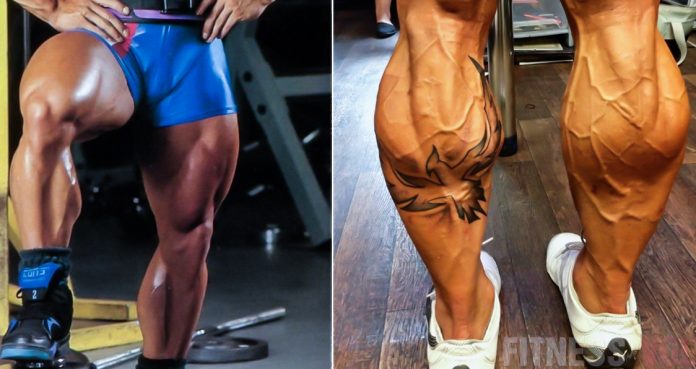
A Killer Circuit Workout To Build Monster Calves
Best Calf Training Circuit To Turn Your Calves Into Bulls
Calves can be one of the most stubborn muscle groups. While it might be hard to grow your calves, only a few other muscles look as dope as a pair of giant and shredded calves. If you’re like most people, performing 2-3 calf exercises won’t do much for your calf gains.
You need to be hitting all the three heads of your calves for optimal calf development. In this article, we’ll give you a circuit workout which will leave your calves begging for mercy. In the workout, you’ll be changing volume and intensity to get the most out of your workout.
Circuit 1 – 3 Sets
Seated Calf Raises (Neutral Feet Placement) – 10 Reps
You’ll be doing performing three rounds of the first circuit before moving onto the second circuit. Seated calf raises work the soleus muscle which will give your calf width towards the outside of your lower leg.
Your calves have two kinds of muscle tissues. The gastrocnemius is a fast-twitch muscle tissue while the soleus is a slow-twitch muscle. You’ll see better results by performing the ten reps of the seated calf raises with a 10-second pause at the bottom of the movement.
Hold and contract your calves at the top of the movement for a second before returning to the starting position. The neutral feet placement means that your feet will be parallel to each other while performing the exercise.
Standing Calf Raises (V-Feet Placement) – 20 Reps
The standing calf raises work the gastrocnemius which is the heart-shaped muscle. While performing the exercise, you’ll place your heels close to each other while the toes will be pointing outwards.
The V-feet placement helps in targeting the inner head of the calves. Since the gastrocnemius is a fast-twitch muscle fiber you’ll be performing 20 reps of the exercise without pausing at the bottom of the movement.
Donkey Calf Raises (A-Feet Placement) – 20 Reps
Donkey calf raises are one of the most underutilized exercises. If you don’t have a donkey calf raise machine at your gym, you can perform the exercise by asking someone to set on your back while you do the calf raises on an elevated platform.
While performing the calf raises, you need to keep your toes next to each other and the heels pointing outwards. The A-feet placement works the outer head of the calves. You’ll be pausing for a second and contacting your calves at the top of the movement.
Circuit 2 – 3 Sets
Leg Press Calf Raises (Neutral Feet Placement) – 20 Reps
While you’re performing a circuit, there should be no rest between exercises. After you’re done with one set of the exercise, rest for 45-60 seconds before starting the next set. The leg press calf presses work the gastrocnemius.
Smith Machine Calf Raises (V-Feet Placement) – 20 Reps
Most people let their egos get the better of them while training calves. Make sure you’re not lifting more weights than you can handle. Following a full range of motion is of utmost importance in calf development.
Seated Single-Leg Calf Raises – 20 Reps
Performing unilateral exercises can help in developing strength and fix muscle imbalances. While performing the calf exercises, you should be on your toes at the top of the movement. Your feet should look like the feet of a ballerina at the contraction point.
How often do you train your calves? Let us know in the comments below. Also, be sure to follow Generation Iron on Facebook, Twitter, and Instagram.

4 Overrated Training Variables
Here are four overrated training variables.
A mark of a great coach isn’t solely in what they include in their toolbox, but also what they don’t include. Simple is often times better, but many coaches and fitness enthusiasts like to stuff every program and method inside their repertoire.
They like to jump on the latest buzzword or training method and thus, their checklist for a training program gets wildly complex with no rhyme or reason.
So, let’s go over some training variables you can ditch in your own training.
1. Time Under Tension
Most people don’t understand muscle growth and thus, dumb terms like time under tension is born. I’ll admit, this term isn’t all wrong, but the way people view and apply it is completely off. To understand why, let me explain the basics of muscle growth.
Your muscles don’t grow from time under tension per se. It grows from mechanical tension that gets translated into a chemical signal for your body to construct new muscle proteins. The keyword I want to hone in on is mechanical tension which is much different from time under tension.
Mechanical tension has little to do with time and more to do with individual muscle fiber producing force. When your muscle fibers contract slowly towards the end of the set, all muscle fibers within that muscle are recruited and the contractions velocity slows down, thus every rep performed in this state is hypertrophic irrespective of the time it remains in this state.
This is why no matter how you manipulate many variables like rep range, tempo, and load within the set makes little to no difference. If you reach the same proximity to failure, the set produces the same growth regardless of how much time under tension there was or how much constant tension there was.
Higher rep sets are longer and technically have longer time under tensions, but all research confirms they produce the same muscle growth as lower rep sets with the exception of sets that are too low (1).
Time under tension is often misapplied. People will cut range of motion or do deliberately slow concentrics to increase time under tension and think they’re growing more muscle. However, reducing range of motion grows less muscle in nearly every exercise confirmed by research, so this is a scenario where more time under tension is worse for your gains.
Furthermore, slowing down the concentric reduces the total load or reps you’re lifting which reduces mechanical tension.
Lastly, people will focus overly hard on their muscles, so they can feel that tension longer, but that doesn’t do much which brings me to my next point.
2. The Mind-Muscle Connection
The mind-muscle connection is referred to as an internal focus. You focus on the internal muscle that you want to target or is being targeted.
Whether you do it to increase the time under tension or to simply make the muscle work harder, this is generally a futile effort in more advanced lifters. Here’s why.
The motor neurons that recruit your muscles and the sensory neurons that you feel are 2 different things. Sometimes, they line up naturally and other times they don’t. You can feel sensation in a certain muscle and it’s not actually producing much mechanical tension.
Thus, internally focusing reduces your work output and can unfavorably change recruitment patterns. This reduces total work performance and can even compromise muscle growth. Your brain’s motor cortex is already a highly efficient specimen. If you select the proper exercise for a muscle and execute the proper technique (external cuing), your motor cortex will optimize the muscle recruitment pattern.
For example, one study compared internal against external focus on conventional deadlifts (2). The external focus group had better posture, stability, and less bar path variability. When you focus too much on the mind-muscle connection, you’re interrupting your brain’s already optimized recruitment pattern.
You don’t need to feel the muscle more. Instead of spending time focusing so hard on certain muscles, learn biomechanics, choose optimal exercises for that muscle, and focus on executing them well. Chase technique not muscle sensation.
For example, aiming for certain arm paths will bias certain pec divisions more during presses. Same goes for certain back divisions during rows. But there is no need to focus on specific muscles.
3. The Pump
We all grew up watching the beast Arnold Schwarzenegger. He was iconic and is well known for talking about the muscle pump before it even became a thing in the literature. He would describe how the pump feels better than sex and you should be chasing the pump every session.
Unfortunately, as amazing as Arnold was, he’s way off on this one. The pump doesn’t grow muscle. I might’ve just shattered your world view of muscle growth, but hey, hopefully, you’ll learn more after all this and not place your devotion to men you don’t even know.
Anyways, the pump in research is called metabolic stress. Metabolic stress is the accumulation of metabolite by-products. It’s what gives you that burning sensation within your muscles. Metabolites include lactate, phosphate, and hydrogen ion. This is not to be confused with lactic acid which is something different.
Metabolites provide lots of interesting mechanisms like swelling the muscles and causes reactive oxygen species, both of which don’t grow muscle. However, metabolic stress lowers the threshold for high motor units to be recruited.
So metabolic stress is the natural by-product of high rep training which allows those higher motor units to be recruited typically seen in the first few reps of lower rep sets.
To be clear, this pump doesn’t grow muscle, but rather is one way to make muscle growth possible via mechanical tension. So you should push hard during high rep sets, but you should never create a program around how much of a pump you can get. Doing so, can easily lead to less muscle growth.
For example, high intensity interval training, short rest periods, partial reps, and training to failure, all increase metabolic stress, yet all of these methods have the potential to grow less muscle.
Furthermore, blood flow restriction training causes massive metabolic stress, yet research finds it grows a comparable amount of muscle as traditional strength training.
So the pump is a good feeling to get. It’s a normal feeling to get. But you don’t go chasing it and the level of metabolites you feel doesn’t correlate with much. It’s mostly just for looking temporarily beefier for Instagram selfies.
4. Muscle Damage
When you were in high school PE class, the coach would teach you about the basics of muscle growth. They would talk about you have to tear muscles for them to grow back stronger. Then, they’d ramble about some dumb life analogy on how struggles make you better.
In fact, many personal training certifications teach the same thing. Yet, this is not substantiated by research. Research finds undisputedly, the only pathway to get the chemical response of new muscle growth is from a mechanical stimulus. A metabolic stimulus as we mentioned doesn’t directly grow muscle.
And believe it or not, muscle damage or tearing of the fibers doesn’t either. Muscle damage can correlate with soreness, but people don’t understand that soreness is a feeling.
As insensitive as it may sound, facts don’t always care about your feelings though. Muscles have neurological patterns ingrained in the brain that controls them. The more accustomed you are to a movement, the more effective it can coordinate that movement.
However, when you are doing something, you’re not accustomed to, your muscles can’t coordinate as well and thus, experience these micro tears. It’s called muscle damage and it can make you quite sore. However, more muscle damage doesn’t mean more muscle growth.
If you’ve never swam before, struggling across the deep end of the pool will make you quite sore, but swimming isn’t getting anybody buff. Furthermore, training at longer muscle lengths causes more muscle damage.
So certain training protocols or training with exercises you’re not accustomed to may cause more muscle damage, but it doesn’t correlate with more muscle growth.
In fact, muscle damage is inherently not a positive thing. By definition, muscle damage is muscle breakdown. Some studies show muscle damage increases the stimulation of muscle protein synthesis, but with no net gain in muscle growth. This means that muscle damage signals for repair, but not additional muscle growth.
Chasing muscle damage is also not a reliable metric of your training program. A sorer or more damaging workout isn’t necessarily a better workout. In fact, muscle damage in excess limits skill execution and performance/recovery markers, so muscle damage in excess is clearly detrimental.
Don’t Chase Feelings, Chase Performance
So as you can see, many common training variables are overrated. Remember, we live in a world where content is pumped out daily, so everybody will be making content on everything. Don’t grip on to every concept so tightly as they may simply be ineffective or overcomplicated.
But now you know better. You don’t have to necessarily optimize for time under tension, you don’t have to leave the gym painfully sore, and you don’t have to buy supplements that promises a filthy pump.
All these things have their own application, but most lifters shouldn’t be overly concerned about chasing these variables.
For more news and updates, follow Generation Iron on Facebook, Twitter, and Instagram.
References
Schoenfeld, Brad. “Strength and Hypertrophy ADAPTATIONS between LOW- vs. HIGH-LOAD RESISTANCE Training: A Systematic Review and Meta-Analysis.” Journal of Strength and Conditioning Research, U.S. National Library of Medicine, pubmed.ncbi.nlm.nih.gov/28834797/.
Chan, Alan, et al. “Effects of Attentional Focus and DUAL-TASKING on Conventional DEADLIFT Performance in Experienced Lifters.” International Journal of Kinesiology and Sports Science, www.journals.aiac.org.au/index.php/IJKSS/article/view/5665.

Nick Walker Shares Training Video Ahead Of Olympia
Nick Walker showed off a chest and bicep workout 10 days out of the 2021 Olympia.
Nick Walker has been extremely impressive this year on stage. He has been one of the top competitors in the world and has a chance to complete it with a victory at the 2021 Olympia. Walker won the New York Pro this year and earned qualification to the biggest event of the year.
The Olympia will take place this weekend in Orlando. Prior to the event, Walker got a warmup at the Arnold Classic, where he defeated the likes to Iain Valliere and Steve Kuclo. This was his second victory of the year and will have a chance to complete the trifecta at the Olympia. Ahead of the event, Walker released a training video on his YouTube page.
“After an incredible Arnold Classic debut where Nick finished 1st overall, he is back in the gym and getting ready for the Olympia where he will make his Olympia debut. Watch as Nick takes you through his chest and bicep routine, while explaining why he does certain exercises. Thanks for watching and enjoy!!”
[embedded content]
Nick Walker released this video on Sept. 30 of a chest and bicep workout. On Sunday, a shoulder workout was shared giving 70.3 thousand subscribers a chance to see how one of the top bodybuilders in the sport gets ready for competition.
Walker will have plenty of competition heading into this year’s Olympia. There have been four different winners in each of the last four years. Big Ramy will enter with a chance to repeat and will be viewed as one of the favorites. There will be plenty of other big names featured at the event. William Bonac was forced to miss the Arnold Classic but has his sights set on Orlando.
Hadi Choopan has arrived in the United States to compete while Roelly Winklaar and Nathan De Asha, who recently won the Arnold Classic UK, will also be on stage.
There will be plenty of competition for Walker but he has been training appropriately to be at his best during the Olympia. There is only a few more days until the biggest competition will crown a champion.
Generation Iron will have full coverage of the 2021 Olympia over the course of the weekend.
For more news and updates, follow Generation Iron on Facebook, Twitter, and Instagram.
